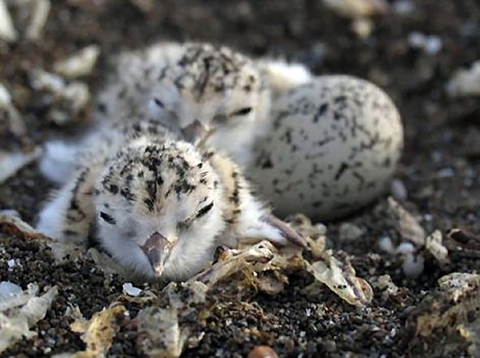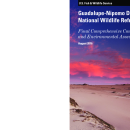What We Do
Two small ponds were created with suitable edges to plant the federally endangered La Graciosa thistle, Gambel’s watercress, and marsh sandwort. The water depth and slopes were also shaped to be potential refugia for the benefit of the California red-legged frog.
The above-mentioned plant species have extremely small populations and narrow habitat requirements. They are raised in greenhouses, transported to the refuge and fenced off from feral pigs and mule deer. The goal is for these plants population to stabilize around the periphery of the ponds without requiring intensive management.
The once-dynamic refuge dunes would be on the move were it not for non-native invasive species invasive species
An invasive species is any plant or animal that has spread or been introduced into a new area where they are, or could, cause harm to the environment, economy, or human, animal, or plant health. Their unwelcome presence can destroy ecosystems and cost millions of dollars.
Learn more about invasive species such as European beach grass and Veldt grass; these have anchored the dunes and changed the behavior of the entire system. The Service continues to work with partners to chemically and manually control these invasive species.
The Service continues to monitor Western snowy plovers on refuge property. Many of the nests are exclosed each season to increase nesting success by reducing depredation pressure. Beach access is restricted during nesting season from March through September.
Building, developing, and maintaining partnerships is one of the priorities of the Service. The Refuge cooperatively works with a wide variety of partners on many projects involving research, monitoring, habitat restoration, endangered species recovery, invasive species control, education, outreach, interpretation, and other topics.
Management and Conservation
Comprehensive Conservation Plan
Comprehensive Conservation Plans (CCPs) are the primary planning documents for National Wildlife Refuges. As outlined in the National Wildlife Refuge System Administration Act, as amended, the U.S. Fish and Wildlife Service (Service) is required to develop CCPs that guide refuge management for the next 15 years. CCPs articulate the Service’s contributions to meeting refuge purposes and the National Wildlife Refuge System mission. CCPs serve as a bridge between broad, landscape-level plans developed by other agencies and stakeholders and the more detailed step-downs that stem from Refuge CCPs.
The 2016 Final Comprehensive Conservation Plan for Guadalupe Nipomo Dunes National Wildlife Refuge can be found here: https://ecos.fws.gov/ServCat/Reference/Profile/114423




